Living close to nature, finding peace in its natural rhythms and the beauty of trees and wide vistas is a state of mind that has been gaining ground these last few years even in endlessly hectic Taiwan. But few people actually manage to achieve this idyllic state. Chen Wen-hui (
Respectfully called the "kiln master" (
Gardens filled with many plants native to Taiwan are a major part of Huataoyao, and the clay used in the pottery is local Miaoli (
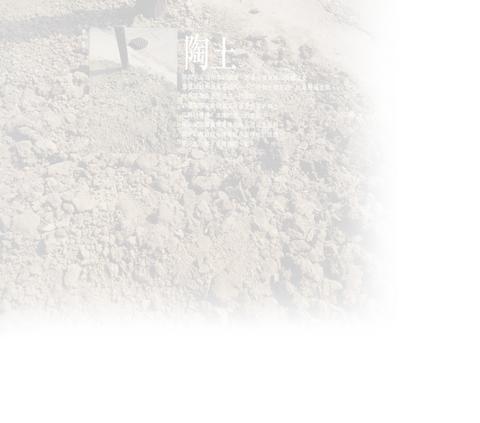
And then of course there is the kiln, the focus of so much of Huataoyao's life.
The main terraced kiln (
The kiln has formed the center of Huataoyao for nearly 18 years. It stands outside the extensive pottery workshop, where high shelves of clay work stand waiting to be fired. Chen Ching-yang (
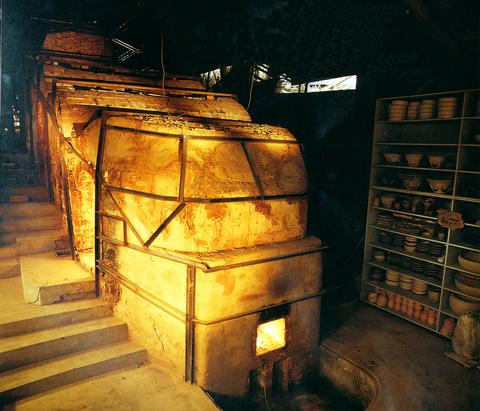
PHOTO COURTESY OF HUATAOYAO
The Huataoyao style, unsurprisingly, is very simple, making use of only one or two glazes and relying on the natural effects of wood ash and the environment of the kiln to produce design elements.
Taking up an aquamarine teapot with a splash of yellow across one side that recalls the liquid ambers which turn the hillside golden in autumn, guide Liu Chen-ru (
"We are still working to create our own style," Chen said, "something that fits the nature concept of Huataoyao, but also something modern."
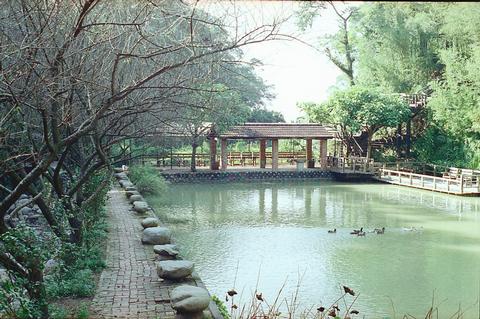
PHOTO: IAN BARTHOLOMEW, TAIPEI TIMES
Huataoyao employs two senior potters who work using traditional designs and methods, while younger potters are experimenting with more geometrical designs. Huataoyao produces a maximum of around 1,000 works each year.
Casting around for new ideas to attract people to Huataoyao, Chen Ching-yang said they were now incorporating various activities such as tea appreciation groups. Liu, who is knowledgeable about the abundant plant life, also hosts these gatherings, where people gather at selected locations in Huataoyao's large gardens. This activity will officially begin on Oct. 31.
Entry to Huataoyao is by pre-arrangement only, a measure that ensures that the surroundings are not overwhelmed by tourists. "It is important that the original inspiration for Huataoyao was not commercial," Chen said.
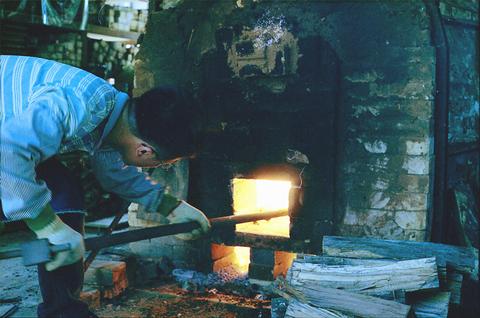
PHOTO: IAN BARTHOLOMEW, TAIPEI TIMES
How well this homely spirit can be preserved in the face of new developments to attract more visitors -- the carefully planned lookout points and tea drinking locations, the pottery displays and pottery classes -- remains to be seen. It has taken the Chen family 18 years to make Huataoyao what it is. The kiln master has never been in a rush. "When we plan a new structure, he puts up a basic framework for a couple of months to see how it fits. If it's good, then work commences. If not, we tear it down and start again," said Chen.
If anything can keep Huataoyao out of the ranks of second-rate tea houses touting dubious spiritual qualities, it is this.
Huataoyao is located at 31, Lin 2, 358 Nanshih Ward, Yuanli township, Miaoli (苗栗縣苑裡鎮358南勢里二鄰31號), tel: (037) 743-611 or on the Web at http://htkiln.com.tw
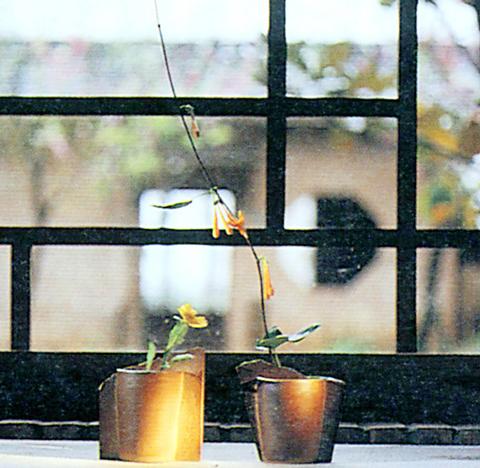
Day tours of the gardens are available for NT$825 on public holidays and NT$675 on other days. A special tea appreciation day will be held on Oct. 31 which will include a specially prepared lunch, special high quality teas and a concert of Taiwanese music for NT$1,200.

The 1990s were a turbulent time for the Chinese Nationalist Party’s (KMT) patronage factions. For a look at how they formed, check out the March 2 “Deep Dives.” In the boom years of the 1980s and 1990s the factions amassed fortunes from corruption, access to the levers of local government and prime access to property. They also moved into industries like construction and the gravel business, devastating river ecosystems while the governments they controlled looked the other way. By this period, the factions had largely carved out geographical feifdoms in the local jurisdictions the national KMT restrained them to. For example,

The remains of this Japanese-era trail designed to protect the camphor industry make for a scenic day-hike, a fascinating overnight hike or a challenging multi-day adventure Maolin District (茂林) in Kaohsiung is well known for beautiful roadside scenery, waterfalls, the annual butterfly migration and indigenous culture. A lesser known but worthwhile destination here lies along the very top of the valley: the Liugui Security Path (六龜警備道). This relic of the Japanese era once isolated the Maolin valley from the outside world but now serves to draw tourists in. The path originally ran for about 50km, but not all of this trail is still easily walkable. The nicest section for a simple day hike is the heavily trafficked southern section above Maolin and Wanshan (萬山) villages. Remains of

With over 100 works on display, this is Louise Bourgeois’ first solo show in Taiwan. Visitors are invited to traverse her world of love and hate, vengeance and acceptance, trauma and reconciliation. Dominating the entrance, the nine-foot-tall Crouching Spider (2003) greets visitors. The creature looms behind the glass facade, symbolic protector and gatekeeper to the intimate journey ahead. Bourgeois, best known for her giant spider sculptures, is one of the most influential artist of the twentieth century. Blending vulnerability and defiance through themes of sexuality, trauma and identity, her work reshaped the landscape of contemporary art with fearless honesty. “People are influenced by

Ten years ago, English National Ballet (ENB) premiered Akram Khan’s reimagining of Giselle. It quickly became recognized as a 21st-century masterpiece. Next month, local audiences get their chance to experience it when the company embark on a three-week tour of Taiwan. Former ENB artistic director Tamara Rojo, who commissioned the ballet, believes firmly that if ballet is to remain alive, works have to be revisited and made relevant to audiences of today. Even so, Khan was a bold choice of choreographer. While one of Britain’s foremost choreographers, he had never previously tackled a reimagining of a classical ballet, so Giselle was